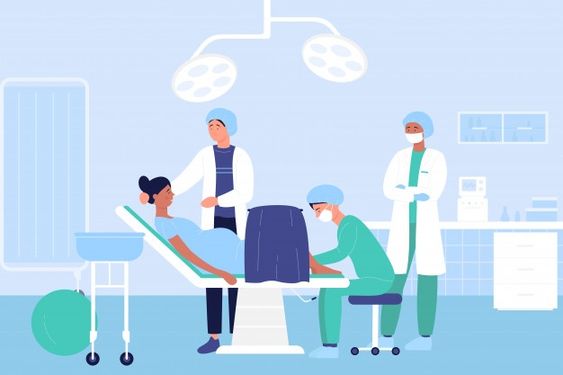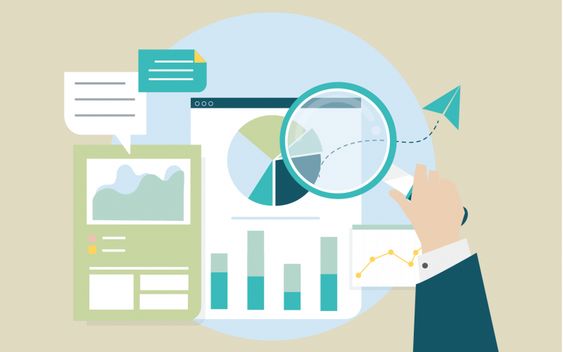
Table of Contents
The world of maternity nursing is brimming with opportunities for research, exploring the unique challenges and triumphs of pregnancy, childbirth, and postpartum recovery. A well-crafted maternity nursing research paper can contribute valuable knowledge to the field, influence clinical practice, and advocate for improved patient care. However, the process of writing a compelling maternity nursing research paper requires careful planning, rigorous research, and an engaging writing style.
This article delves into the essential steps to creating a maternity nursing research paper that captivates readers, sparks critical thinking, and leaves a lasting impact.
What is Maternity Nursing?
Like other academic papers, writing an impactful maternity nursing research paper requires you to first understand what maternity nursing is and what it entails. Understanding the essence of this nursing specialty will make it easier to choose a compelling topic and craft an engaging maternity nursing research paper.
Maternity nursing is a specialized area of nursing that focuses on the care of women during pregnancy, labor, delivery, and the postpartum period. It also includes the care of newborns. Maternity nurses are often called labor and delivery nurses, postpartum nurses, or newborn nurses.

Here’s a breakdown of the different aspects of maternity nursing:
Prenatal Care:
- Educating expectant mothers: Providing information about pregnancy, childbirth, breastfeeding, and infant care.
- Monitoring maternal health: Assessing vital signs, weight, and fetal development.
- Addressing concerns and complications: Supporting mothers through any challenges they may face during pregnancy.
Labor and Delivery:
- Supporting women during labor: Providing comfort measures, emotional support, and pain management.
- Monitoring mother and baby: Assessing vital signs, fetal heart rate, and labor progress.
- Assisting with delivery: Providing direct care to the mother and baby during delivery.

Postpartum Care:
- Monitoring maternal recovery: Assessing vital signs, bleeding, and pain levels.
- Supporting breastfeeding or bottle feeding: Providing education and assistance with latch, milk supply, and bottle feeding techniques.
- Providing infant care: Assisting with bathing, feeding, diapering, and other newborn care needs.
Neonatal Care:
- Assessing newborn health: Evaluating vital signs, weight, and physical development.
- Providing newborn care: Assisting with feeding, bathing, and diapering.
- Identifying and managing newborn complications: Recognizing and responding to potential health issues in newborns.
Key Responsibilities of a Maternity Nurse:
- Patient assessment and care: Gathering information about patients, assessing their needs, and developing individualized care plans.
- Medication administration: Administering medications, including intravenous fluids and pain management medications.
- Monitoring patient vital signs: Tracking heart rate, blood pressure, temperature, and respiration.
- Communication and education: Communicating with patients, families, and other healthcare professionals.
- Documentation: Maintaining accurate and complete patient records.
- Advocacy: Representing the patient’s needs and wishes.
Maternity nurses play a crucial role in ensuring the well-being of both mothers and babies during a very special and often challenging time. They provide physical and emotional support, education, and guidance, helping families navigate the journey of pregnancy and parenthood.
Steps for Maternity Nursing Research Paper Writing
1. Defining Your Research Focus and Framing Your Question:
The first crucial step in crafting any maternity nursing research paper is to identify a specific research focus. This involves narrowing down a broad topic, such as postpartum depression, breastfeeding challenges, or maternal health disparities, into a manageable and researchable question. Consider the following tips:
- Relevance: Choose a topic that aligns with current clinical needs and research gaps in the field of maternity nursing. Look for areas where existing knowledge is limited, or where current practices could be improved.
- Feasibility: Ensure your research question is feasible within your time, resources, and expertise. Consider the availability of data sources, potential study participants, and the complexity of the research design.
- Impact: Aim for a research question that has the potential to contribute meaningfully to the body of knowledge in maternity nursing. Consider how your findings might influence clinical practice, policy, or patient education.
2. Conducting Thorough Literature Review:
A comprehensive literature review is the foundation of a well-informed maternity nursing research paper. It involves systematically searching, analyzing, and synthesizing existing research related to your chosen topic.
- Identify Key Databases: Utilize relevant databases, such as PubMed, CINAHL, Nursing Papers and Cochrane Library, to access peer-reviewed articles, systematic reviews, and other scholarly publications.
- Develop Search Strategies: Craft precise search terms and Boolean operators (AND, OR, NOT) to refine your search and retrieve relevant studies.
- Critical Appraisal: Evaluate the quality and reliability of the retrieved literature using established critical appraisal tools, focusing on research design, methodology, and findings.
- Synthesize and Analyze: Organize the findings from the literature review to highlight key themes, identify gaps in knowledge, and formulate arguments that support your research question.
3. Choosing the Appropriate Research Design:
Selecting the right research design is crucial for the validity and reliability of your maternity nursing research paper. Common research designs in maternity nursing include:

- Quantitative: These designs rely on numerical data and statistical analysis to test hypotheses and establish cause-and-effect relationships. Examples include randomized controlled trials, cohort studies, and cross-sectional studies.
- Qualitative: These designs explore subjective experiences, perspectives, and meanings through interviews, focus groups, and observations. They are particularly useful for understanding complex social and behavioral phenomena.
- Mixed Methods: This approach combines quantitative and qualitative methods to provide a comprehensive understanding of a research question.
4. Implementing Ethical Considerations:
Ethical considerations are paramount in any research involving human participants, especially in the context of maternity nursing research. Ensure your study adheres to the ethical principles of:
- Informed Consent: Participants should be fully informed about the purpose, risks, and benefits of the study before providing consent.
- Confidentiality and Privacy: Protect the anonymity and confidentiality of participants’ data throughout the research process.
- Beneficence and Non-maleficence: Ensure the research benefits participants and minimizes potential risks.
- Justice and Equity: Recruit participants from diverse backgrounds to ensure representation and avoid biases in your research.
5. Gathering and Analyzing Data:
The process of data collection and analysis will depend on your chosen research design. Here are some general guidelines:
- Quantitative Data: Utilize standardized instruments, surveys, or observational tools to gather data. Analyze data using statistical software to test hypotheses and draw inferences.
- Qualitative Data: Conduct in-depth interviews, focus groups, or observations. Analyze qualitative data using thematic analysis or other qualitative research methods to identify recurring themes and patterns.
- Mixed Methods Data: Integrate quantitative and qualitative data, focusing on how they complement and inform each other.
6. Presenting Your Findings in a Clear and Concise Manner:
Once you have analyzed your data, you need to present your findings in a clear, concise, and compelling manner. Structure your maternity nursing research paper according to the standard IMRAD format:

- Introduction: Briefly introduce the research topic, provide background information, and state your research question.
- Methods: Describe your research design, participants, data collection procedures, and data analysis techniques.
- Results: Present your findings in a logical order, using tables, figures, and text to illustrate your data.
- Discussion: Interpret your findings, explain their significance, and discuss their implications for clinical practice, future research, and patient care.
7. Writing in a Scholarly and Engaging Style:
Your writing style plays a significant role in captivating your readers and making your maternity nursing research paper impactful.
- Academic Tone: Maintain a formal and objective tone, avoiding jargon and slang.
- Clarity and Conciseness: Write in clear and concise language, avoiding unnecessary wordiness or technical jargon.
- Strong Argumentation: Present your arguments logically, using evidence from your research findings and the literature review to support your claims.
- Active Voice: Use active voice whenever possible to make your writing more engaging and impactful.
- Engaging Language: While maintaining a scholarly tone, incorporate vivid language, compelling anecdotes, and relevant examples to make your writing more interesting and relatable to your audience.
8. Refining and Polishing Your Manuscript:
Once you have completed the first draft of your maternity nursing research paper, take time to revise, edit, and proofread your work meticulously.
- Revise and Edit: Review your manuscript for clarity, flow, organization, and adherence to scholarly standards. Seek feedback from colleagues or mentors to improve the quality of your writing.
- Proofread: Carefully check for grammatical errors, spelling mistakes, and inconsistencies in formatting.
- Format and Style: Ensure your manuscript adheres to the journal’s specific formatting guidelines and citation style (e.g., APA, MLA, Chicago).
9. Submitting Your Manuscript for Publication:
Choosing the right journal is essential for maximizing the visibility and impact of your maternity nursing research paper.
- Target Audience: Select journals that align with your research focus and target audience, considering their readership, scope, and impact factor.
- Journal Guidelines: Carefully review the journal’s submission guidelines, including manuscript format, length, and specific requirements.
- Peer Review Process: Be prepared for the peer review process, where your manuscript will be evaluated by experts in the field.

10. Disseminating Your Findings:
Once your maternity nursing research paper is published, you can further disseminate your findings through:
- Presentations: Share your research at conferences, workshops, and other professional settings.
- Social Media: Engage with your target audience on social media platforms to highlight your research findings and promote discussion.
- Outreach Activities: Collaborate with community organizations or patient advocacy groups to translate your research findings into practical applications and improve patient care.
Common Pitfalls in Nursing Research Papers and How to Solve Them
Writing a maternity nursing research paper might seem like a walk in the park to some students. However, it also comes with some unforeseen pitfalls that you should be on the look out for. The following are the most common mistakes in writing a maternity nursing research paper and how to address them.
1. Lack of a Clear Research Question:
- Pitfall: The research question is poorly defined, unclear, or too broad.
- Solution:
- Clearly identify the research problem and its significance.
- Formulate a specific, measurable, achievable, relevant, and time-bound (SMART) research question.
- Consult with mentors or experts to refine the question.
2. Inadequate Literature Review:
- Pitfall: Insufficient or biased literature review, failing to include relevant studies or focusing on outdated information.
- Solution:
- Conduct a comprehensive search using multiple databases and search terms.
- Include both primary and secondary sources.
- Analyze the existing literature critically, identifying gaps and inconsistencies.
- Summarize the findings in a concise and objective manner.
3. Poor Methodology:
- Pitfall: Weak study design, inappropriate sampling methods, inadequate data collection, or unreliable instruments.
- Solution:
- Choose a research design that aligns with the research question and available resources.
- Use appropriate sampling techniques to ensure a representative sample.
- Employ validated and reliable data collection methods.
- Pilot test the instruments and ensure their reliability and validity.
4. Inadequate Data Analysis:
- Pitfall: Using inappropriate statistical methods, misinterpreting results, or neglecting to present the data clearly in your maternity nursing research paper.
- Solution:
- Choose appropriate statistical tests based on the research question and data type.
- Consult with a statistician for guidance.
- Present the data in tables, figures, and text in a clear and concise manner.
- Draw conclusions based on the data and avoid over-generalization.
5. Poor Writing Style and Structure:
- Pitfall: Lack of clarity, coherence, and conciseness in writing. Using jargon, passive voice, and overly complex sentence structures.
- Solution:
- Use a clear, concise, and active writing style.
- Organize the paper logically, using headings and subheadings.
- Use a consistent writing style and adhere to APA style guidelines.
- Proofread carefully for grammar, spelling, and punctuation errors.

6. Ethical Considerations:
- Pitfall: Neglecting to address ethical issues related to informed consent, confidentiality, and data security in your maternity nursing research paper.
- Solution:
- Obtain informed consent from participants.
- Ensure confidentiality of all data.
- Protect participant privacy and anonymity.
- Adhere to ethical guidelines for research involving human subjects.
7. Lack of Practical Implications:
- Pitfall: Failing to discuss the implications of the findings for nursing practice.
- Solution:
- Discuss the significance of the findings for nursing practice.
- Provide clear recommendations for future research and practice.
- Emphasize the contribution of the research to the body of knowledge.
8. Insufficient Discussion of Limitations:
- Pitfall: Ignoring or minimizing the limitations of the study.
- Solution:
- Acknowledge the limitations of the study.
- Discuss how these limitations might have affected the results.
- Suggest future research to address these limitations.
9. Failure to Cite Sources Properly:
- Pitfall: Not citing sources accurately or using plagiarism.
- Solution:
- Cite all sources using APA style.
- Avoid plagiarism by paraphrasing and using quotation marks when necessary.
- Use plagiarism detection software to check for unintentional plagiarism.
10. Lack of Peer Review:
- Pitfall: Submitting the paper for publication without obtaining feedback from peers.
- Solution:
- Get feedback from colleagues or mentors before submitting the paper.
- Consider submitting the paper to a peer-reviewed journal.
By addressing these common pitfalls, you can improve the quality and impact of your nursing research papers. Remember to consult with experienced researchers, mentors, and colleagues for guidance throughout the research process.

Crafting an engaging maternity nursing research paper is a challenging but rewarding endeavor. By following these steps, you can contribute valuable knowledge to the field, influence clinical practice, and advocate for improved patient care. Remember to focus on a relevant and feasible research question, conduct thorough research, present your findings clearly, and communicate your message effectively. Through your work, you can advance the science of maternity nursing and make a lasting impact on the lives of mothers and their families.
Professional Maternity Nursing Research Paper Help
Writing an impactful maternity nursing research paper can be a daunting task for most students. However, you should not beat yourself up because at PhD Nurse Writer, we can deliver a customized maternity nursing research paper help. We also offer professional writing services for nursing essays, thesis, case studies and dissertations.





